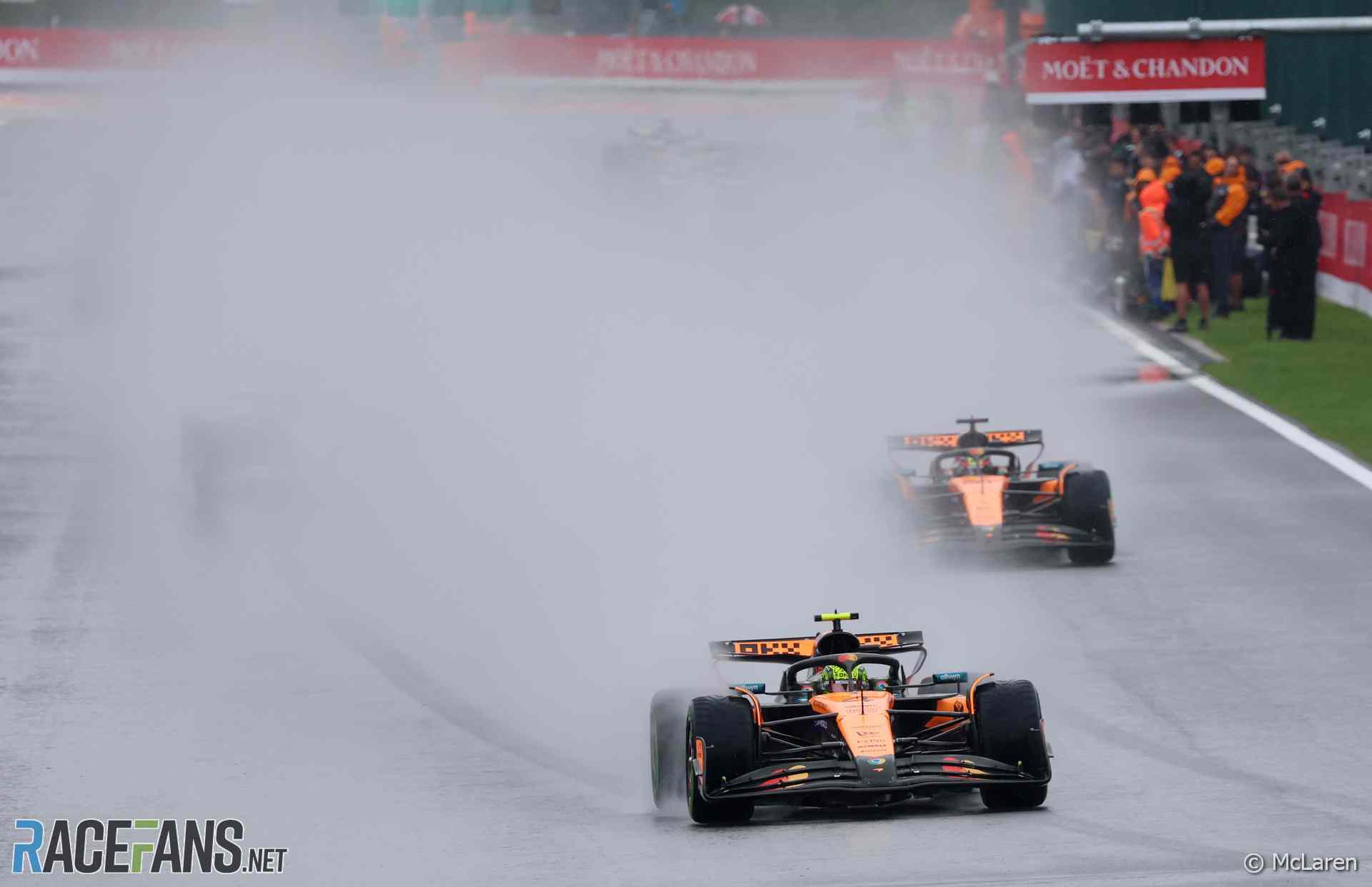Mercedes driver George Russell recently ignited a fierce debate within the Formula 1 community, declaring that driving in heavy spray is not “racing” but “stupidity.” His candid remarks highlight the increasingly critical issue of motorsport visibility and driver safety during extreme wet weather racing conditions, prompting a reevaluation of current regulations and car design.
Russell articulated his concerns vividly, describing the experience of navigating an F1 car at over 200 miles per hour through Eau Rouge with literally zero visibility. He likened it to wearing a blindfold, emphasizing the perilous nature of such conditions and questioning the rationale behind allowing races to proceed when drivers cannot adequately perceive their surroundings.
The current challenges with spray are amplified by modern ground effect cars. Comparisons to historical races, such as Spa 1998, reveal a stark contrast: despite cars going faster in the past, contemporary Formula 1 vehicles generate significantly more spray. This phenomenon is largely attributed to the aerodynamic advancements of ground effect designs, which effectively suck water from the track surface and expel it as a dense mist.
In response to these persistent issues, various solutions are being explored for future seasons. Suggestions include the implementation of smaller diffusers and a reduction in ground effect, alongside the introduction of narrower tyres. While initial tests with mudguards proved unsuccessful in mitigating spray, the focus has shifted to addressing the primary source of the problem: the diffuser’s role in water displacement.
It is crucial to differentiate between water droplets and the more problematic mist. Expert analysis indicates that the most significant visibility impediment is caused by mist, which forms as damp air transitions from the low-pressure zone beneath the car to ambient pressure. This atmospheric phenomenon, unlike simple water spray, lingers in the air and cannot be effectively dispersed by conventional mudguards, presenting a complex engineering challenge for F1 safety.
The debate surrounding wet weather racing also involves diverse driver perspectives. While some, like Russell, vocally advocate for enhanced safety, others embrace the extreme challenge of driving in limited visibility, viewing it as a test of skill. Historical precedents, such as Alain Prost’s withdrawal from the 1989 Adelaide GP or Niki Lauda’s decision at Fuji in 1976, underscore the complex balance between driver willingness, championship implications, and inherent risks.
Past incidents also reveal instances where drivers faced immense pressure to compete despite safety concerns. Accounts from the 1989 Australian Grand Prix, for example, recall drivers agreeing that conditions were too dangerous, only to be reportedly compelled to race by authority figures, highlighting a long-standing tension between commercial imperatives and driver well-being in Formula 1.
The discussion extends to potential technological adaptations. Proposals include a “wet configuration” for cars, such as fitting spray-minimizing skirts around the ground effect floor and diffuser. Such modifications could dramatically reduce spray, enabling race control to make proactive decisions for improved motorsport visibility during anticipated rain, even if it doesn’t dry the track as quickly.
Ultimately, the ongoing discourse within Formula 1 underscores a fundamental tension: the desire for thrilling, unpredictable racing versus the paramount need for driver safety. As the sport continues to evolve, finding a sustainable solution to the perils of wet weather racing, particularly the pervasive ground effect spray, remains a critical objective for all stakeholders committed to the sport’s integrity and future.






Leave a Reply